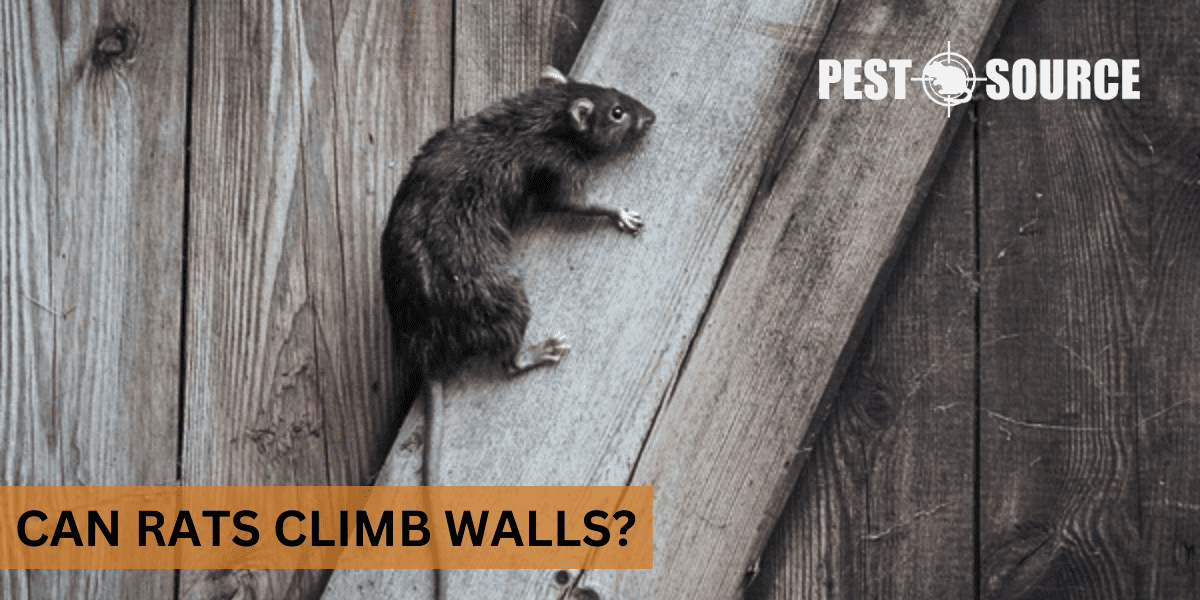Yes, rats are excellent climbers and can scale vertical walls, especially if the surface is rough or textured. This post will explore the physical abilities that enable rats to climb walls and how this skill affects their access to food and shelter. Recognizing their climbing capabilities is crucial in understanding rat behavior and effectively managing infestations.
POINTS
- Rats have sharp claws and strong muscles that enable them to climb a variety of surfaces, including brick, concrete, and stucco.
- While rats can climb smooth walls, they are challenged by materials like glass, metal, and certain plastics, which are too slick for them to grip.
- Preventative measures such as trimming vegetation, installing barriers, and sealing gaps can help deter rats from climbing walls and entering homes.
- Rats can reach impressive heights by climbing, with the ability to scale up to 4 feet on vertical walls and jump horizontally up to 3 feet.
- To effectively prevent rats from gaining access to a home, it is crucial to secure windows with sturdy screens and cover vents with wire mesh.
How Do Rats Climb Walls?
Rats are known for their agility and adaptability, which includes a remarkable ability to climb various surfaces. They can scale brick, concrete, stucco, and even smooth walls. This climbing prowess is due to several biological adaptations.
Biological Adaptations for Climbing
Rats possess sharp claws that allow them to grip onto even the smallest irregularities in a surface. Their strong muscles, particularly in their hind legs, enable them to leap and hoist themselves up vertical planes. Additionally, rats have a highly flexible body that can squeeze through tight spaces, aiding them in climbing and navigating through challenging environments.
How High Can Rats Climb?
Rats are not just skilled at climbing; they can also reach impressive heights. They can easily climb up to 4 feet on a vertical wall without any ledges or assistance and can jump horizontally up to 3 feet. This ability is integral to their survival, helping them escape predators and search for food.
Factors Influencing Climbing Height
The texture and material of the wall significantly affect a rat’s climbing ability. Rough surfaces like brick or stucco provide better footholds, while smoother surfaces like polished concrete or vinyl siding are more challenging. Despite these challenges, rats can still find ways to climb smooth walls by using pipes or vegetation as aids.
Are Rats Good Climbers?
Rats are exceptional climbers, adept at scaling trees, fences, and even navigating upstairs. Roof rats, in particular, are known for their ability to climb higher and more skillfully than other rodent species.
Comparison with Other Rodents
When compared to other rodents, rats are among the best climbers. Their climbing skills surpass those of mice, which are also good climbers but not as proficient at reaching high places. Squirrels are another example of skilled climbers, but they tend to prefer trees and may not navigate urban obstacles as effectively as rats.
What Can Rats Not Climb?
Despite their impressive ability to scale various surfaces, rats do face limitations. There are certain materials and structures that challenge their climbing abilities and can act as effective barriers.
Climbing Limitations
Smooth, vertical surfaces without any protrusions present a significant challenge for rats. Materials like glass, metal, and certain plastics can be too slick for rats to grip effectively. Additionally, surfaces treated with rat-repellent paints or coatings that create a slippery finish can prevent rats from climbing.
How to Stop Rats Climbing Walls?
Preventing rats from climbing walls and entering homes is crucial for pest control. There are several measures you can take to deter these agile climbers.
Preventative Measures and Modifications
- Trim Trees and Vegetation: Keep trees and shrubs trimmed away from your home, as rats can use branches to bypass walls entirely.
- Install Barriers: Use metal or plastic barriers at the base of walls and fences. These should angle outwards to create a surface that rats cannot navigate.
- Rough Surfaces: Apply textured coatings to walls to make them more difficult for rats to climb.
- Seal Gaps: Ensure that all gaps and holes in walls and foundations are sealed, as rats can use these as starting points for climbing.
Deterrents and Securing Entry Points
- Repellents: Use natural or chemical repellents around the base of your home to discourage rats from approaching.
- Motion-Activated Devices: Install motion-activated lights or ultrasonic devices that can startle and deter rats from climbing.
- Secure Windows and Vents: Fit windows with sturdy screens and cover vents with wire mesh to prevent rats from climbing through them.
How High Can Rats Jump?
Rats are capable jumpers, with an average vertical leap allowing them to reach heights of up to 36 inches (about 91 centimeters) when necessary. This agility helps them navigate their environment, escape predators, and gain access to food sources. It’s important to consider a rat’s jumping ability when rat-proofing structures to ensure that potential entry points above ground level are also secured.



